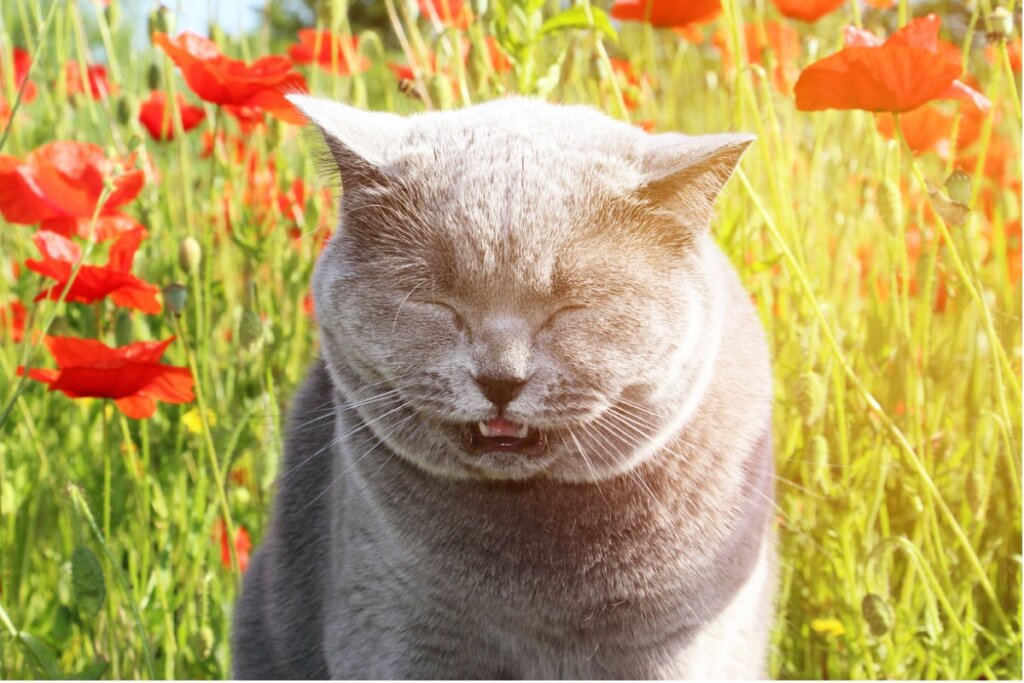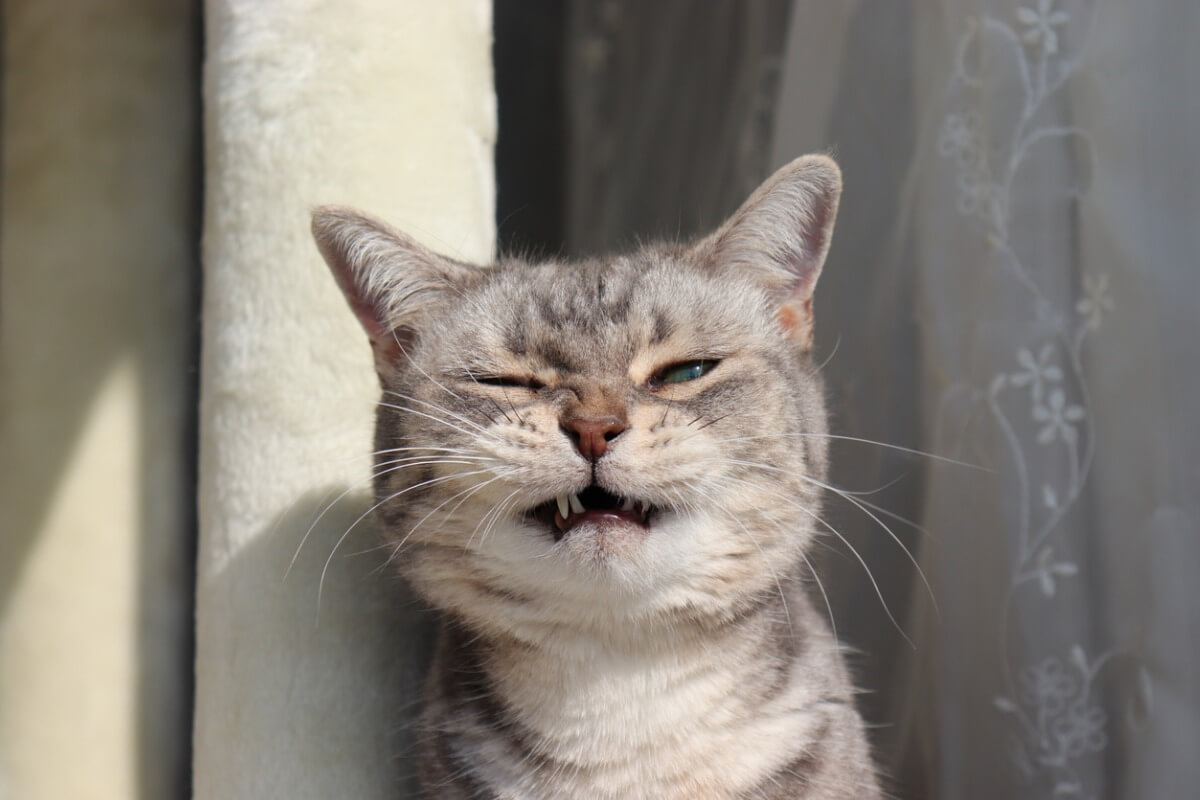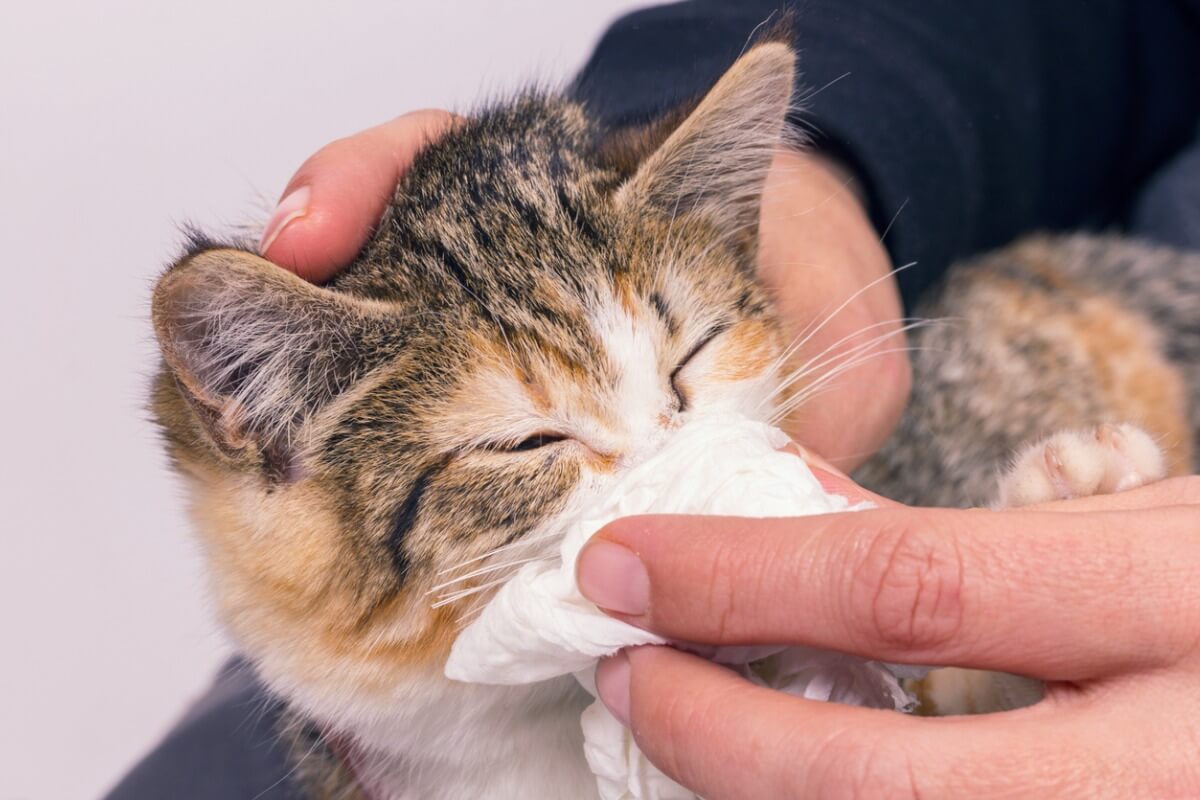Reverse Sneezing in Cats: Symptoms and Treatment

Sneezing isn’t an unusual reflex, as most animals have it. Even so, did you know that there’s such a thing as reverse sneezing in cats? This process has a much lower incidence than other natural acts and is often confused with asthma attacks, coughing, or even retching.
In this article, we’ll explore what reverse sneezing is in cats, what function it fulfills in their bodies, and what to do when it occurs. Whether it’s because you’ve observed it in your cat, or because you’re just curious, read on to find out more about it.
What is reverse sneezing in cats?
A normal sneeze is a reflex of the nasal cavity to expel pathogens and foreign bodies that might otherwise enter the respiratory system. A reverse sneeze is a reflex to send air in the other direction, i.e. into the body.
A reverse sneeze in cats is caused by a spasm of the muscles responsible for drawing air into the body: the diaphragm, intercostals and abdominals. The characteristic noise produced by this act, similar to a rapid snore, is due to the vibration of the soft palate and the passage of air through the trachea.
The function of this reflex is to circulate mucus and irritating particles towards the oropharynx, so that they can be eliminated by coughing afterwards (or via the digestive tract). To give you an idea, it’s a bit like coughing up snot, but more abrupt.

Causes
This reflex is triggered when some foreign or irritating matter threatens to block the nasopharyngeal passages and is found too deep in the nostrils. The most common triggers for reverse sneezing are listed below:
- Allergens such as dust, pollen, and dust mites
- Household chemicals such as cleaning products, air fresheners, and perfumes
- Stress
- Collars that are too tight
- Asthma
- Excitement
- Exercise intolerance
- Sudden temperature changes
- Respiratory and nasal pathologies
- Nasal tumors or nasopharyngeal polyps
- Dental disease
- Increased nasal secretion
- Pneumonia
- Cleft palate
Symptoms
Usually, episodes of reverse sneezing last for a few seconds and then stop on their own. In that period of time, you’ll notice the following symptoms:
- Orthopneic posture: This is the position that an animal adopts to facilitate the passage of air. In this case, the cat will extend its neck and align its body with its head, staying close to the ground.
- Occasional gagging.
- Coughing.
- Breathing sounds: these are the product of nasal secretion moving inwards.
- Lack of energy.
During a reverse sneeze, there’s no loss of consciousness and no loss of muscle tone. If you observe these symptoms over time, go urgently to the vet, as this is a serious condition that requires immediate attention.
Is this reflex worrying?
It’s true that if you don’t know how to recognize reverse sneezing in cats, it can be a cause for alarm. However, it’s a completely normal reflex that will end naturally (in almost all cases) and appears very occasionally.
However, like everything in life, if it is repeated too often or is accompanied by other symptoms (which we’ve shown above), it could well be a sign that something is wrong. In this case, it’s best to see a vet, as respiratory conditions can become serious (and even lethal) if not treated in time.
What should I do if my cat is suffering an episode of reverse sneezing?
Remember that, in itself, reverse sneezing in cats won’t endanger the animal’s life, so you don’t need to panic. If the cat is wearing a collar, loosen it so it doesn’t bother him. If the episode lasts too long for your liking, a good option is to provoke the swallowing reflex, which is incompatible with the reverse sneeze.
To make the cat swallow and stop the reverse sneeze, try holding its nose or gently massaging its throat.
Some cats aren’t easy to handle, so you’ll have no choice but to wait for the sneezing to stop. Of course, it goes without saying that if the episodes are repeated or always appear in the same circumstances, then there may be an underlying problem that needs veterinary attention.
Treatment for reverse sneezing in cats
As you might have guessed, the treatment applied in these cases isn’t to stop the sneezing itself, but to solve the pathology that causes them (if any). This will require a veterinary diagnosis that can only be carried out in a clinic.
However, you’ll never be able to completely prevent reverse sneezing in cats, as it’s a natural defense mechanism of the body. All animals sneeze and cough from time to time even if they’re not sick, and this is also true in the world of felines and dogs.

However, prevention never hurts. Make sure your home is as free of dust and dirt as possible. Keep chemicals out of reach of the cat and remove it from the room where you’re going to use them. And, of course, never skip your cat’s regular health check-ups – that’s when you’ll know for sure whether they’re in good health or not.
All cited sources were thoroughly reviewed by our team to ensure their quality, reliability, currency, and validity. The bibliography of this article was considered reliable and of academic or scientific accuracy.
- Aprea, A. N., Giordano, A., & Bonzo, E. B. (2010). Enfermedad rinofaríngea en el gato: hallazgos endoscópicos. Veterinaria Cuyana, 5.
- Bruzzone, E. R. (2006). Síndrome obstructivo en vías respiratorias superiores. REDVET. Revista Electrónica de Veterinaria, 7(2), 1-7.
- Wallois, F., Macron, J. M., & Duron, B. (1995). Activities of vagal receptors in the different phases of sneeze in cats. Respiration physiology, 101(3), 239-255.
